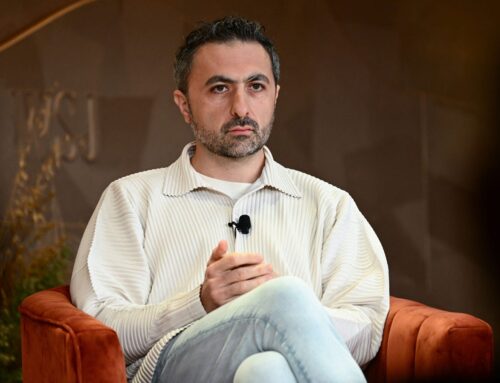Updated information environment blueprint helping Navy architect maritime operations cente
April 11, 2025
NATIONAL HARBOR, Md. — The Navy recently published an update to its Information Environment Ecosystem Blueprint, helping inform how it will build out its maritime operation centers.
The blueprint, first developed over a year ago, documents the reference architecture to move from a host of interconnected systems to a capability platform model. Version two of the plan was published last fall, further defining features such as how cloud services interact with each other, Jennifer Edgin, assistant deputy chief of naval operations for information warfare (N2N6B), said in an interview at the Sea-Air-Space conference this week. She added that the plan also helped drive down some network redundancies to eliminate legacy networks.
The blueprint has “really laid a strong foundation for a lot of our infrastructure in terms of our network modernization … we want to have our interconnected MOCs,” Edgin said.
The Navy has stated that those MOCs, short for marine operations centers, will be the primary warfighting platform from which the service will fight and command and control its forces. This has been necessitated by the greater distances — particularly in the Pacific — that the Navy must be ready to fight across. Forces will be distributed and must command and control their assets while passing critical data back and forth — a task too great for carrier strike groups to do alone.
“To ensure that we maintain our warfighting advantage, our commanders have to have information and decision advantage. Our maritime operations centers is where we fuse that information. It’s where we make warfighting decisions. It’s where we outthink — it’s where we outmaneuver the adversary and where we generate orders to the fleet,” Vice Adm. Karl Thomas, deputy chief of naval operations for information warfare and director of naval intelligence, N2/N6, said during a panel at the conference. “In all cases, the complexity and the speed of the fight will rely on us synthesizing vast amounts of information. The amount of information that is flowing now compared to what it was in the past is a tremendous order of magnitude difference.”
Edgin explained that the MOCs are where the fleet will begin the process of commanding and controlling information and forces.
The Navy is targeting 2027 for all MOCs to be certified, beginning with the Pacific theater. Each MOC is slightly different, and to get to that point by 2027 will take a variety of efforts, such as developing back-end technology to enable the interfaces and information flows. They will also have to focus on training forces to ensure sailors are proficient learning in live, virtual and constructive environments.
“Just think of, you do something once, and then you don’t have to do it for a number of months, your skills atrophy. That’s just normal. We want to create that opportunity for sailors to get reps and sets of continuous,” Edgin said. The focus is “making sure that we’re getting the right sailors to the right places. Sailors today are our biggest strategic advantage. They come to the Navy with a whole host of skills that maybe my generation didn’t have. They’re digital natives. Unleashing them in a virtual environment, they’re going to help us advance even more rapidly.”
Moreover, that plan lays out a common reference architecture for what officials described as the tech stack for the MOCs, which will leverage the power of cloud and zero trust to allow customizable apps and interfaces for forces to use with standardized data. With forces using over 70 systems, they will rely on a tightly coupled tech stack from hardware up to the data, according to officials.
“Just like if you were building a subdivision, you would have a couple of different blueprints with some specific options for the houses. That’s exactly what we’re doing in the information environment,” Edgin said.
Edgin noted that the Navy’s Project Overmatch seeks to complement the ashore efforts.
“A lot of times when we think of our blueprint, we think of just our ashore infrastructure. Well, for the Navy, it’s ashore and afloat. Overmatch is our effort to implement our naval operational architecture, particularly at that tactical end,” she said. “That experimentation and that delivery of capability has really yielded great results, not only solving some problems, but for us to define how we want things to work. As we define that at the top of the kind of infrastructure that’s important. It’s a great kind of symbiotic relationship between the two.”
Among some major lessons from Overmatch, Edgin noted it has helped the Navy determine how to use what it already has in different ways, rather than having to make completely new investments.
“When we talk about something new, there’s often a perspective of, oh, you have to get rid of everything. No, there are some good things that we’ve put in place that have allowed sailors to be successful. We want to make sure that those things are kept in place, those continue to advance and it isn’t just a new build,” she said. “That’s where I think some of our biggest learning has occurred is how do you take something new, bring it into an environment that has years and years of capital expenditures and make it all work together. That’s what I think is our biggest lessons learned from Overmatch.”
Search
RECENT PRESS RELEASES
Related Post




